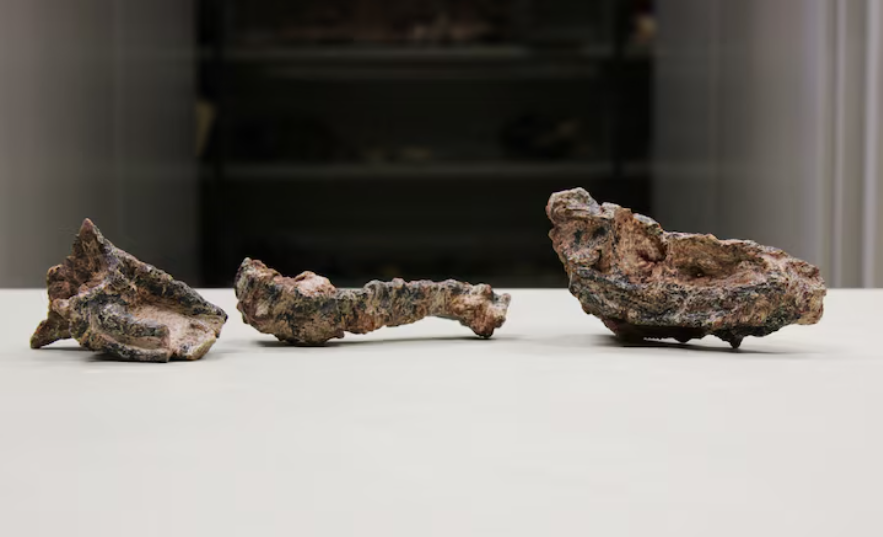
©Rodrigo Temp Muller/Handout via REUTERS/File Photo
Pre-reading questions:
- Why do you think scientists want to explore and study ancient life forms from millions of years ago?
- Would you like to become a paleontologist? If so, what aspects of studying prehistoric life interest you? If not, what other fields of science or exploration do you find more appealing, and why?
Vocabulary:
- crocodile /KROK-uh-dahyl/
- pelvis /PEL-vis/
- existence /ig-ZIS-tuhns/
- represent /rep-ri-ZENT/
- continuous /kuhn-TIN-yoo-uhs/
[noun] – a large reptile with a hard skin that lives in and near rivers and lakes in hot, wet parts of the world
The Nile crocodile is known for its formidable hunting skills and powerful jaws.
[noun] – the bones that form a bowl-shaped structure in the area below the waist at the top of the legs, and to which the leg bones and spine are joined
The pelvic bones provide support and stability to the lower body and play a crucial role in movement and posture.
[noun] – the fact of something or someone existing
The discovery of ancient fossils confirms the fact of existence of prehistoric creatures on Earth millions of years ago.
[verb] – to serve as an example or to symbolize
The Statue of Liberty represents freedom and democracy for many people around the world.
[adjective] – without a pause or interruption
The continuous rain caused flooding in several neighborhoods.
Article reading:
Parvosuchus represents an early offshoot of the Pseudosuchia lineage, which later evolved into modern crocodiles. Living during a period of significant evolutionary change after Earth’s worst mass extinction event 252 million years ago, various groups of reptiles vied for dominance before dinosaurs became predominant. The Gracilisuchidae family, to which Parvosuchus belonged, saw its last undisputed members perish about seven million years before dinosaurs first appeared. Muller emphasized that the discovery of Parvosuchus aurelioi enriches our knowledge of ancient biodiversity and provides crucial insights into the development of crocodiles and dinosaurs. This finding underscores the importance of continuous paleontological research in unraveling Earth’s intricate history.
Comprehension questions
- Where were the fossils of Parvosuchus aurelioi discovered?
- What does the name “Parvosuchus” mean?
- How long ago did Parvosuchus live?
- What family did Parvosuchus belong to?
- What did Rodrigo Muller emphasize about the discovery of Parvosuchus aurelioi?
Discussion questions
- If you could travel back in time to observe Parvosuchus aurelioi in its natural habitat, what aspects of its behavior would you want to study and why?
- Imagine you discovered a new fossil species similar to Parvosuchus aurelioi. What steps would you take to ensure its proper identification and study its significance in paleontology?
- Do you agree that continuous research in paleontology is essential for understanding Earth’s history?
- Considering the evolutionary significance of Parvosuchus aurelioi, how might its discovery influence future studies in paleontology and our understanding of ancient biodiversity?
- In your opinion, what challenges might paleontologists face when interpreting fossil evidence like the remains of Parvosuchus aurelioi, and how can these challenges be overcome to ensure accurate scientific conclusions?